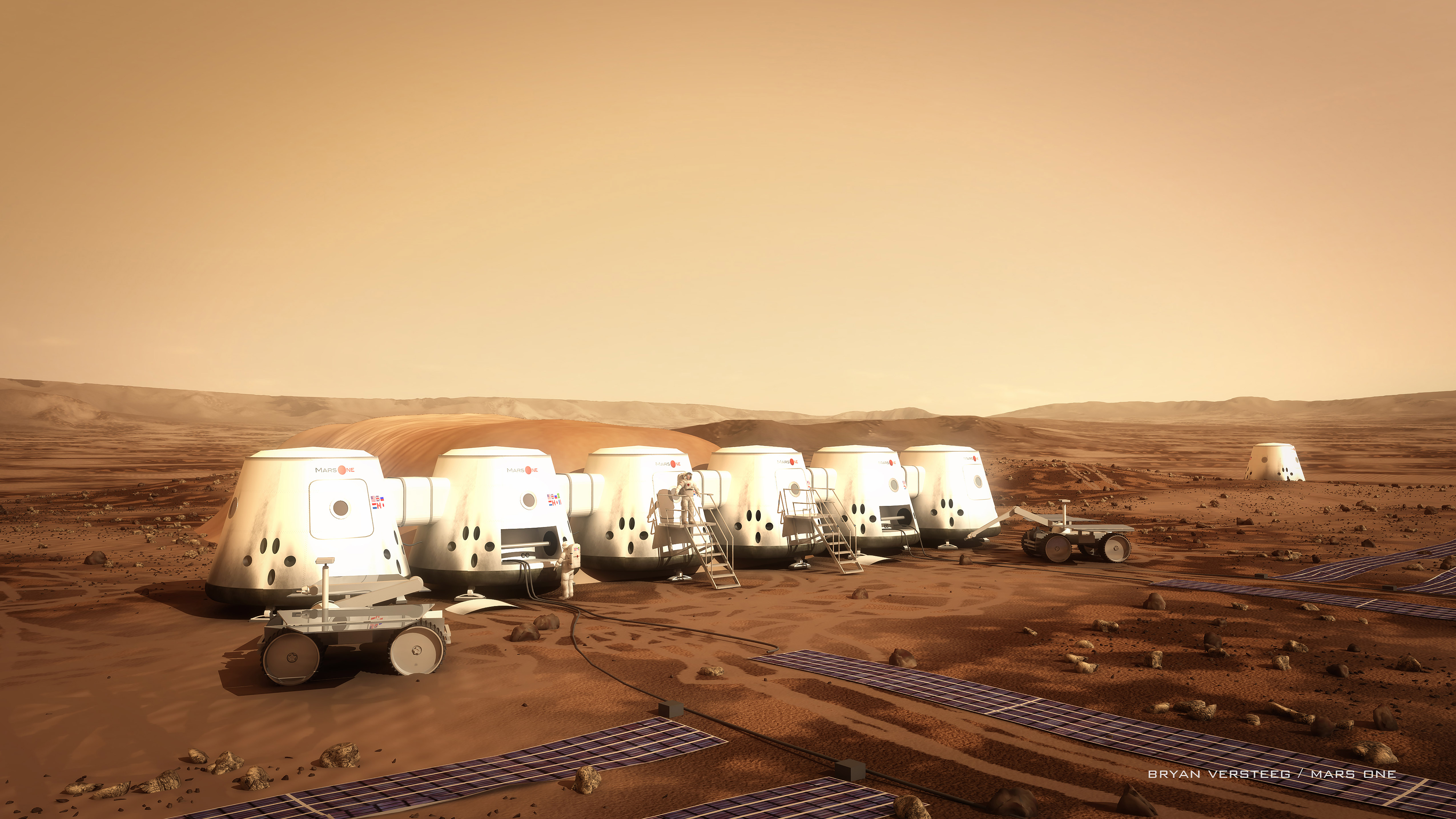
Mars One is a non-profit foundation, co-founded by Bas Lansdorp and Arno Wielders, to establish a human presence on Mars. The prime difference Mars One has over similar peer programs is its unique strategy; this is a one way ticket for a permanent “homesteading” community in an apolitical and international long term plan, thus removing a costly return trip.
The Numbers
Mars One aims to be funded and supported by a global audience in a reality TV format generating interest and income for preparation, transits and life on Mars. As of September 2013, over 200,000 have applied for crew selection aiming to make the first landing in 2023. The company has mapped out the multi-year mission risk categories in terms of loss of human life and cost overruns, estimating a budget of $6 billion over the 10 year program.
The Technology
Feasibility studies including approaches to global private space companies (from SpaceX to Surrey Satellite Technologies Ltd.) have generated interest to potentially supply the integrated components from existing third party technologies and make this venture a reality. Of course it remains to be seen if all these components are proven and their program is viable.
The Training
Six teams of four will be selected for analogue Mars Training and Testing until launch in 2022. Core disciplines will be in component repair, self-sustenance and medical training. Through 2016-20 missions will be launched to establish technical viability, satellite communication and deliver “intelligent” rovers. These will build habitats using in-situ resources and remotely sent living and life support units.
The Journey
Combined transit habitats and landers are the crews’ homes for the seven month voyage. Carrying supplies of food and water, recycling technology and backups are not needed. The crews’ will sleep, live and prepare en route with radiation protection shelters provided. Their experiences will be documented for the global audience as “humanity’s greatest journey”.
The New Martians
Over 2023-24 the first crews aim to arrive at fully functioning modular habitats where they will live, work and settle permanently. Crew and habitat redundancy is vital as the Mars One premise rules out abandonment. Life at the habitat will be filmed and transmitted to global audiences back on Earth with new crews arriving periodically to expand the population and capability of the growing settlement.
A New Home
At the outset, immediate obstacles are the inevitable third party delays which will impact scheduling. The technology gap for long term interplanetary transits and permanent off world settlements is another challenge. Plus the question remains, when will the settlement become self-sustaining? This is important given the ever increasing human lifespan and the potential for offspring on Mars.
Yet, there are years of experience in analogue testing environments such as Biosphere II and AMASE in 2006. Lansdorp’s and Wielders’ plans may be possible on a longer timescale. If we can adapt to live life in harsh inhospitable environments, humanity will have taken its first steps to becoming a multi-planetary species.
You may learn more about Mars One by visiting http://www.mars-one.com/en.



